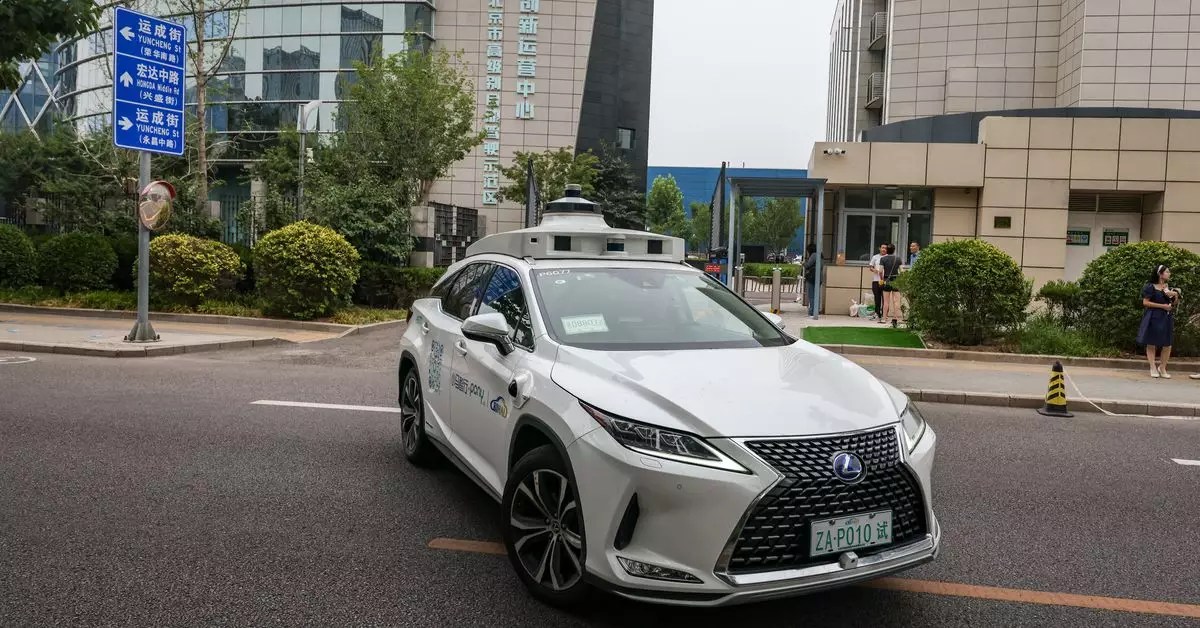The landscape of autonomous vehicle technology is rapidly evolving, revealing a stark divide between the United States and China. The recent developments surrounding General Motors’ decision to withdraw its financial support for Cruise, its robotaxi subsidiary, sharply contrast with the expanding ambitions of China’s Pony.ai. This article examines the current state of the autonomous vehicle industry, the contrasting strategies of companies in the U.S. and China, and the broader implications of these developments on global competition and national security.
While several U.S. automakers retract their investments in the robotic taxi space, Pony.ai has announced an ambitious initiative to grow its fleet from approximately 250 to over 1,000 autonomous vehicles by 2025. This strategic move is bolstered by a partnership with GAC Aion, a prestigious automotive division of a leading Chinese company. By prioritizing rapid fleet expansion, Pony.ai aims to enhance its services in major Chinese urban centers such as Beijing, Guangzhou, Shanghai, and Shenzhen, where demand for autonomous transport continues to soar.
Pony.ai’s protocols show a methodical approach: their fleet manages to average around 15 rides daily per vehicle, equating to a staggering total of over 26,000 trips each week. Such figures underline the effectiveness of China’s investment environment and regulatory framework, which significantly favors the rapid advancement of autonomous technology compared to the United States.
One of the critical drivers behind China’s remarkable progress in the autonomous vehicle sector is its conducive regulatory landscape. In stark contrast, the U.S. faces hurdles stemming from political divisions and varying state regulations. American companies, including General Motors and Ford, have recently pivoted their focus away from robotaxi ventures, directing resources towards enhancing advanced driver-assist technologies for personal cars. This shift indicates a prevailing caution in the U.S. regarding the commercialization of fully autonomous vehicles.
Additionally, the Biden administration’s proposed restrictions on connected vehicle software from China signal a growing concern about national security. In an era marked by escalating tensions between the U.S. and China, these regulations may not only hinder cooperation but also stifle innovation, putting the U.S. at a strategic disadvantage in the autonomous vehicle race.
While American firms like Waymo have made strides in developing autonomous technologies, the financial realities are grim. None of the autonomous vehicle operators, including leading companies both in the U.S. and abroad, have achieved profitability. The success of companies like Pony.ai in scaling their operations at a lower cost is central to their competitive advantage. While Pony.ai and others plan to capitalize on favorable government incentives and cheaper electric vehicles, the reluctance within the U.S. market to embrace similar progressive policies could potentially stymie local innovation.
Moreover, the U.S. market appears not to have fully embraced the concept of robotaxis, with cities expressing hesitance toward their increased presence. Local concerns, particularly in populous urban environments, highlight public apprehensions regarding safety, liability, and infrastructure strain from the expanded deployment of autonomous vehicles.
The U.S. Congress has struggled to reconcile varying viewpoints on the future of autonomous vehicles, resulting in legislative stagnation for over six years. This breakdown often centers around the balance between nationwide regulations and local governance, liability issues, and the number of autonomous vehicles allowed on the streets. While Pony.ai rolls ahead with expansion, American companies find themselves embroiled in internal conflicts about strategy, funding, and public sentiment.
As such, the competition with China looms large, as American policymakers grapple with the implications of the nation falling behind in vital technology sectors. The prospect of creating a federal framework for autonomous vehicle deployment may offer a path forward, yet it is predicated on overcoming the current stalemate in Congress.
The current dynamics surrounding autonomous vehicle development illustrate a crucial juncture where the U.S. risks losing its competitive edge to China. With Pony.ai’s decisive steps towards expansion compared to the retrenchment exhibited by U.S. automakers, the race for leadership in autonomous transportation will likely intensify in the coming years. As nations navigate through complex regulatory environments, technological advancements, and national security considerations, the question remains: Can the U.S. revitalize its approach to autonomous vehicles to keep pace with China’s rapid progress, or will it cede the future of transportation to its global rival?


Leave a Reply